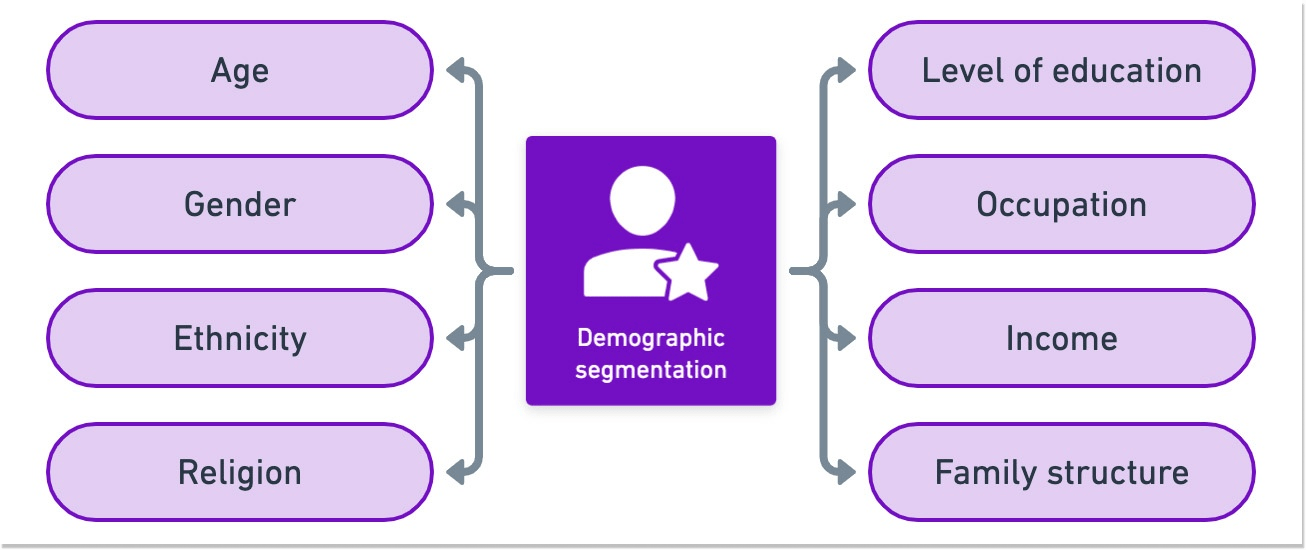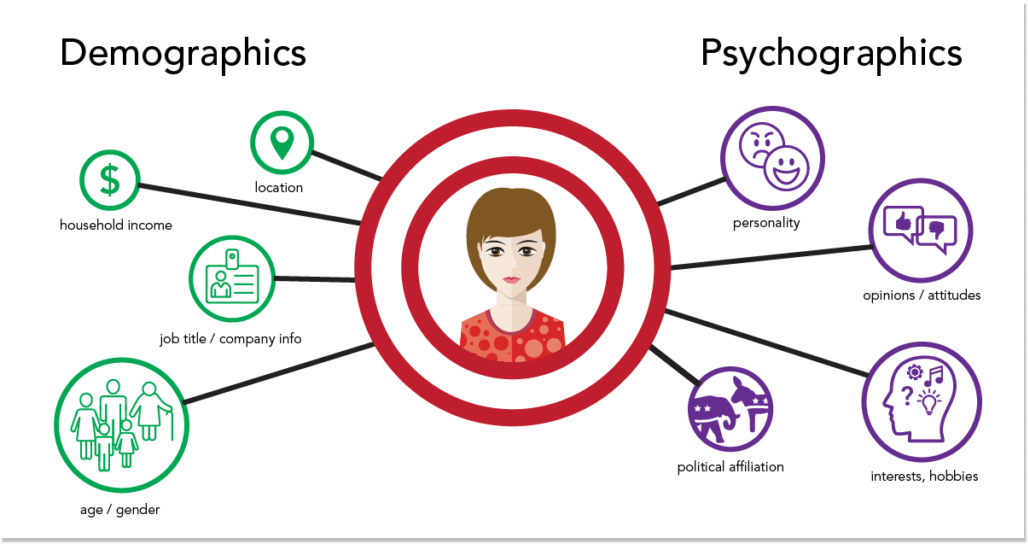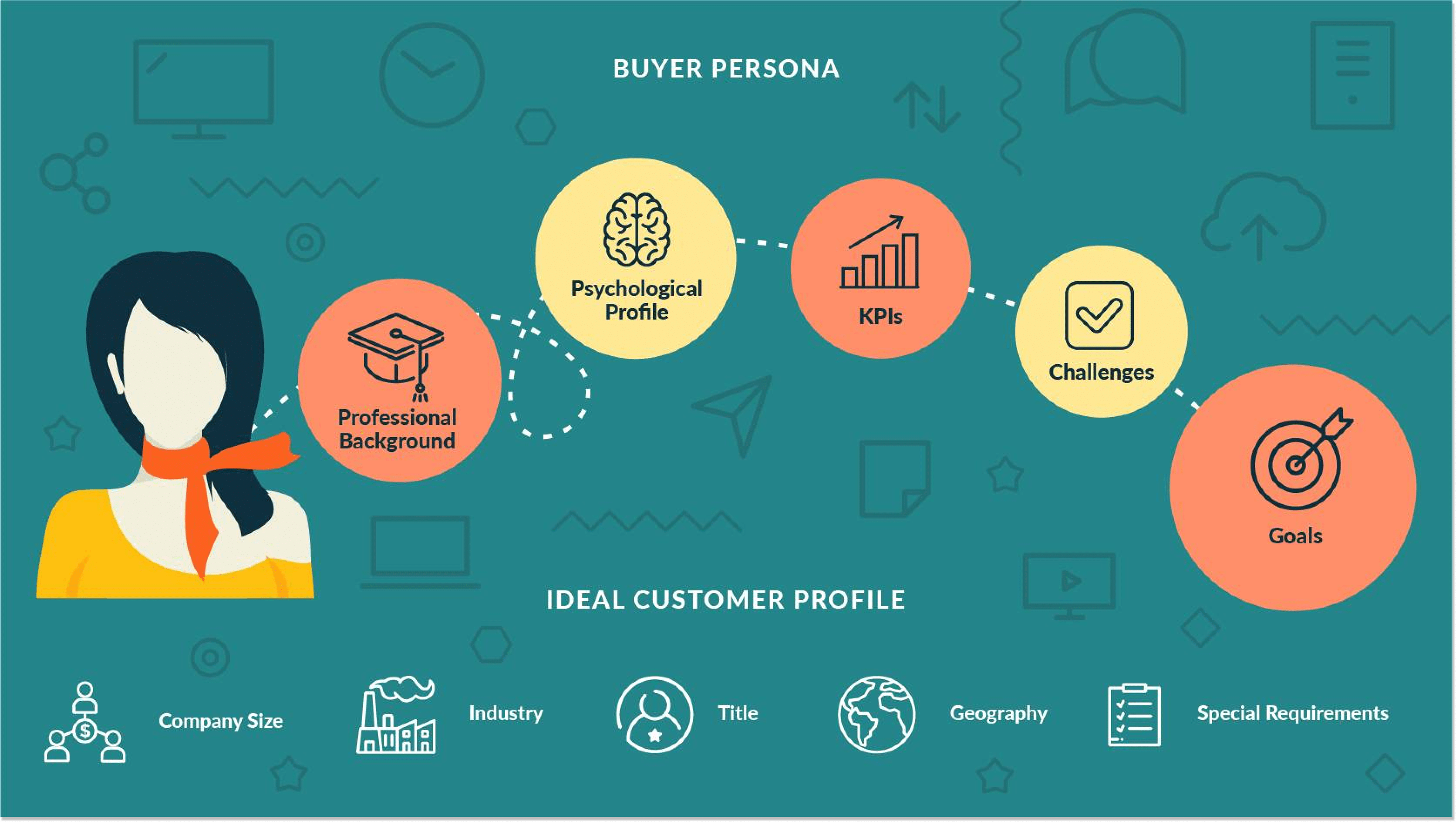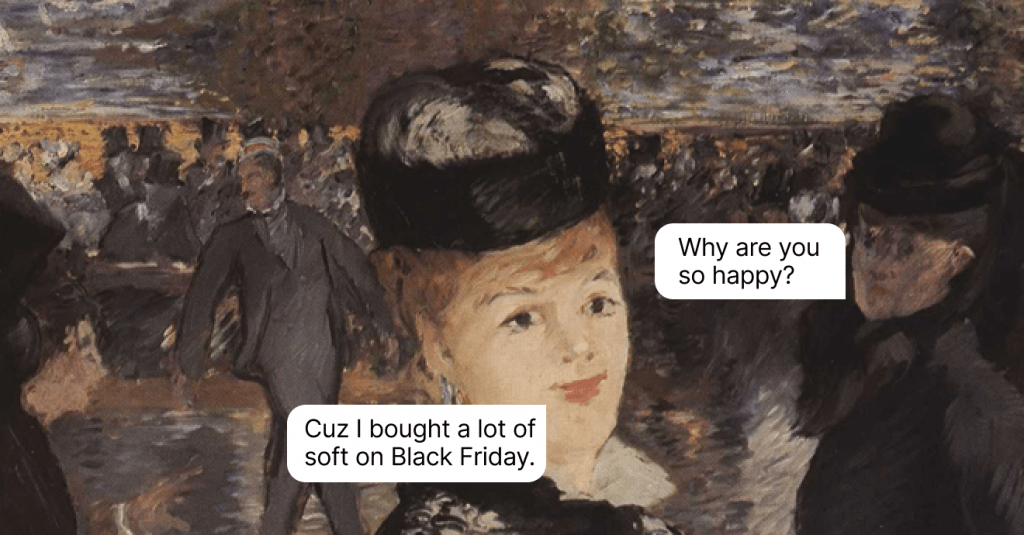6 Types of Customer Segmentation You Might Want to Use
Customer segmentation is a perfect way to identify your clients' particular needs. Learn all the ins and outs of the 6 most common customer segment types to target your clients rationally.
Written by Olesia Melnichenko
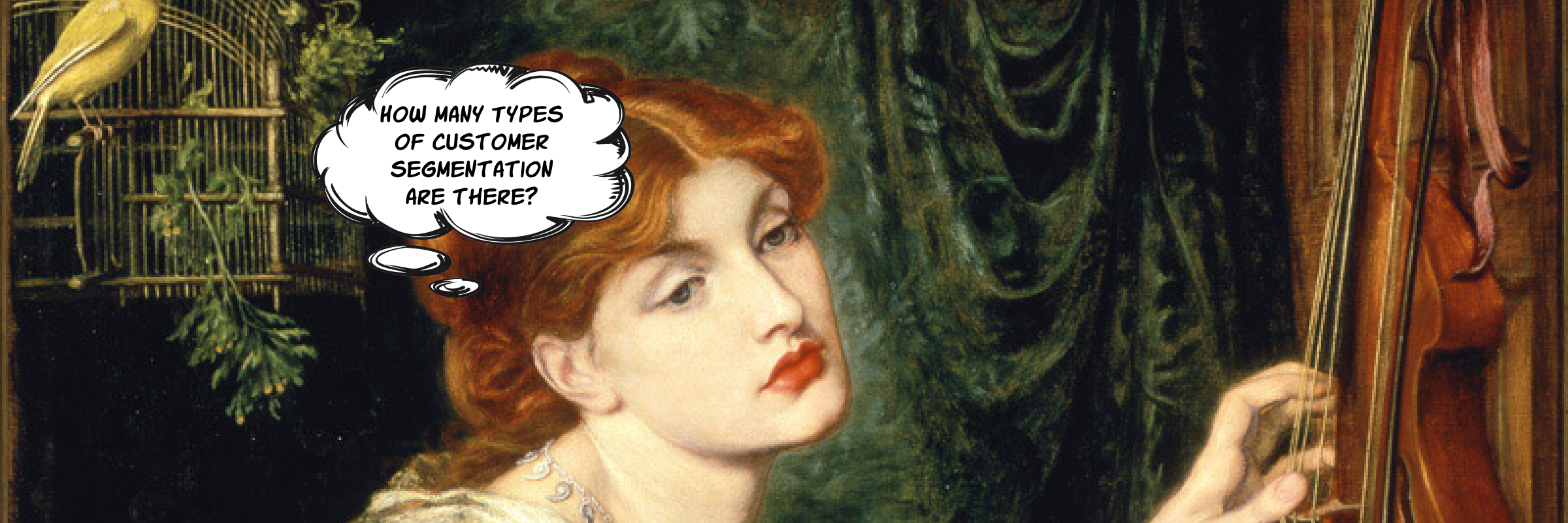
Our lives involve various groups of people one way or another. There are family, friends, coworkers, teachers, fitness instructors, this list can go and on. It’s no secret that you have to take an individual communication method for each of them. You won’t chat with a close friend the way you chat with your team lead, will you?
Your customer base is no exception. All clients come from miscellaneous backgrounds, have no needs alike, and want their expectations to be met differently. They also have unique pain points and demands concerning your business in terms like support, communication, and more.
The secret of maintaining efficient customer relations with everyone is understanding clients’ preferences and needs. And the greatest way to do it is by dividing customers into groups, meaning customer segmentation.
What is customer segmentation and how can it help you generate more sales, get more customers, and provide a better experience for each of your clients? In this blog post, I’ll walk you through all the answers.
What is customer segmentation?
Let’s start with a pinch of theory. According to the Macmillan Dictionary, the word ‘segmentation‘ denotes “the process of dividing something into segments or being divided into segments” according to similar characteristics. To that end, customer segmentation definition (aka market segmentation) implies splitting people in your client base into groups based on such common criteria as, for instance, personalities, hobbies, buying behavior, job titles, or interests they share. Just like we did with the shapes below:
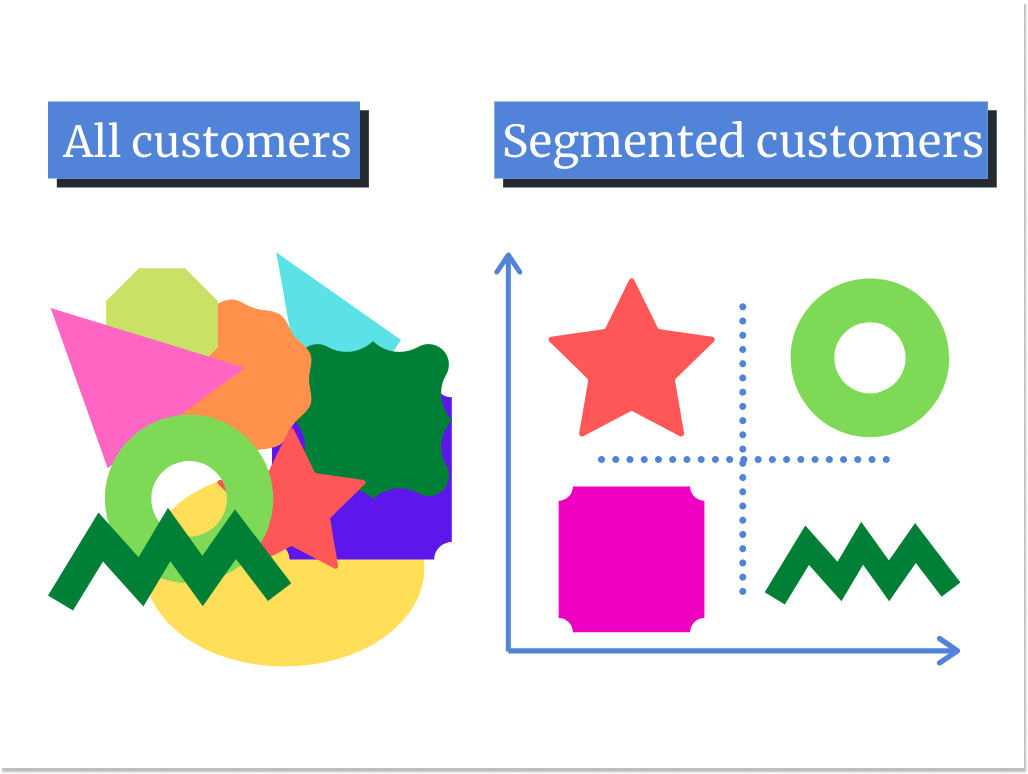
With a range of competitors available in the market, customer segmentation gives you a perfect opportunity to stand out from the crowd. You can easily find the right messaging that will make your clients knock at your door time and time again.
If you want to realize how customer segments work and implement them into your workflow, answer the following pivotal questions (they are the base of customer segmentation):
- What are the key groups of clients your business serves?
- Who are your most and least winning customers?
- What needs do your clients have?
- What products or services do clients enjoy the most?
- How can your products or services lighten customers’ pain points?
- How can you improve your bottom line to increase customer satisfaction?
- What are the best channels to communicate with clients?
What are the main types of customer segments?
Before we set the ball rolling, there are a few customer segmentation mistakes we want you to be aware of (make sure you’re not making them in your future activities):
- Building customer segments that aren’t in-line with the company’s goals
- Creating segments based on predictions and instincts, not the particular data
- Being limited in the data
- Ignoring customer communication channels while building segments
- Not monitoring customer segments over time
To provide you with a starting point for organizing your customers into matching groups, let’s discuss 6 main types of customer segmentation:
1. Demographic segmentation
Demographic segmentation might be the first one to think about when it comes to dividing customers into groups. It breaks down the market based on such criteria as:
- Age
- Gender
- Race
- Ethnicity
- Marital status
- Family size
- Education
- Occupation
- Income
For instance, you’re the owner of an online cosmetic shop. Your store features all the things people might need. Sure thing, different age groups would prefer different face creams, facial masks, lipsticks, whatever. Therefore, you can segment your customers on the basis of their age. You can create a tailored customer engagement strategy later on.
Segmenting customers by demographics saves time and prevents you from selling unnecessary products to potential clients. You can also modify your product or service in less time to suit people’s needs better. Besides, targeting specific audiences can help you make customers happy. In other words, clients get just the things they want and you don’t provide them with unnecessary info.
There are also minor drawbacks. Demographic data changes rapidly year after year, so it’s important to move up with the times (and people can lie about their age). What’s more, such a metric has a descriptive manner: you can’t understand the consumer completely.
2. Geographic segmentation
As you can guess, creating customer segments by geographical principle means that you find out their location: country, state, city, town, IP address, climate. Some industries may also divide their clients based on rural, urban, or suburban areas.
The UK clothing company Superdry sells T-shirts and swimwear in India in November, while the UK citizens can purchase coats and blazers at the same time. Practically, a brand can offer various products to different people according to their weather conditions.
The absolute advantage of geographic segmentation is that you can easily identify the needs of potential clients and process them accordingly owing to well-defined borders, topography, etc. What’s more, densely populated areas often bring in a massive market potential which, in turn, leads to increased profits.
However, geographic segmentation can be tricky as you may somehow predict the weather but you can’t be dead sure whether it keeps on changing. Plus, you lack information on the buying behavior since people living on the same territory may have various preferences.
3. Behavioral segmentation
As the name suggests, this type of customer segment involves people depending on their behavioral patterns as they interact with a brand: the number of sessions with your website, time spent on a website, URLs visited, exit intent, and more. By having all this data, you can craft your message properly:
First-time visitor: Hi there! Learn about our special offers right now!
Returning visitor: Hello again! Join our loyalty program to start saving!
The main goal here is to address the special desires of a customer group and tailor a product or service to put them into action. Behavioral customer segmentation’s criteria are as follows:
- Usage rate: this categorization depends on whether someone is a heavy, medium, light, or non-user of your product.
- Online habits: consider the online shopping habits your users have across all your competitors’ sites as they can create a likelihood they may buy exactly from you.
- Benefits sought: it’s connected to the need a customer is trying to satisfy by purchasing your stuff.
- Loyalty: clients often develop brand loyalty after using a product for some time. Tailor your message according to how loyal your users are.
- Actions taken online: track actions people take on your website to better understand how they interact with it. Look how long they stay on it, whether they read articles till the end, what content they click on, etc. We at HelpCrunch target our customer segments based on their behavior, too. For instance, we use proactive chat and rules to monitor the website’s visitors, or targeted chat and advanced search for authenticated users.
- Product reviews: see how people like your stuff, what challenges they have with it, and what they enjoyed the most.
This customer segmentation type helps sales and marketing teams align as both of them have a focus on closing the deal.
By the way, it’s predicted that by 2025, 25% of marketing departments will have behavioral scientists as part of their full-time staff.
4. Psychographic segmentation
Splitting customers into groups by a psychographic segmentation means that you take their lifestyle, beliefs, traits, social class, and interests into account. Unlike demographic or behavioral data, psychographic segmentation answers the question of Why a person buys a product.
Let’s say a textile company designs clothes for a variety of market sections, such as athletes, students, office workers, etc. They can divide these people into groups according to their lifestyle as an athlete wants to wear gym clothes and an office worker prefers a formal style. This way, all the needs will be catered to properly.
Another great example of a company that fully embraces psychographic is Apple. The recent Apple Event has given me the idea that this technological mammoth always focuses on personality, identity, and creativity. For instance, a brand-new iWatch is all about health: it features blood oxygen level, health rate, and so much more. It can even show the height when you’re hiking.
You might think that it’s impossible to monitor psychographic data through the Internet. But that’s wrong. You can utilize such tools as Facebook Pixel or Brandwatch and see what your customers share and view online.
5. Persona segmentation
A well-thought-out customer persona (aka buyer persona) is your perfect chance to build excellent marketing campaigns for the right groups of clients. With its help, you can understand the audience and speak to them effectively.
Though persona segmentation takes time to produce and requires multiple data, its advantages come down to:
- A consistent view of other customer segments
- Innovative and creative solutions
- A better understanding of what should be done to satisfy customers’ needs
6. Value-based segmentation
This type of customer segmentation is connected to the economic value of specific customer groups. To put it simply, it’s all about how much a person is willing to pay for your products.
To perform value-based customer segmentation, you can just look at previous data such as how many purchases are made, how often, and what the value of those purchases is.
Now that we’ve covered the basics, let’s talk about the importance of customer segmentation. If done right, it can help your business skyrocket.
Why customer segmentation matters?
As Peter F. Drucker, an American management consultant, once stated, ‘the aim of marketing is to know and understand the customer so well the product or service fits him and sells itself‘. And his quote is directly connected to what we’re talking about today.
Without big data, you can’t see the full picture. The recent research shows that customer segmentation is a top-of-mind priority for many executives. 72% of business owners claim that they are using the data to always stay in the know and alter their marketing efforts if need be.
To better perceive the power of customer segmentation, have a closer look at the things you can benefit from:
- Improved marketing campaigns: customer segmentation makes it possible to build tailored marketing messages to each particular segment. In fact, segmented campaigns have almost a 15% higher open rate than non-segmented ones. You should also consider powerful customer engagement software to thoroughly segment your client base and create personalized campaigns for each segment.
- Better offerings: if you know who your customers are, it’ll be a snap to develop an offer for them so that it meets their particular needs to the best extent.
- Greater return on sales: adjusting your marketing efforts to your company’s most successful customer segments can bring about an increase in revenue in the long run.
- Increased loyalty and retention: personalization in our case matters. Judge for yourself, 80% of clients are more likely to do business with a brand that provides personalized experiences. So, your customized content and individualized approach are what you need to savor customer satisfaction and retention.
- Untapped cross-selling and upselling opportunities: by segmenting your existing and potential clients into groups, you can realize what things they could be more interested in. It promotes the update of new products and services relevant to the targeted audience.
You can enjoy all of these benefits if you invest a little bit of your time and effort into segmenting customers the right way. Come to think of it, you can do that using your HelpCrunch account hands down. Go for the details below!
How to segment customers with HelpCrunch?
With HelpCrunch, you can create a variety of customer segments in a snap. For that, go to your HelpCrunch account and find the Contacts section. In the advanced search dashboard on your left, you can Add criteria.
The criteria available are browser language, email, and country, to name just a few. Plus, you can always add custom data to better segment your customers. After you choose the criteria, hit the Save button (it’s a small disk sign).
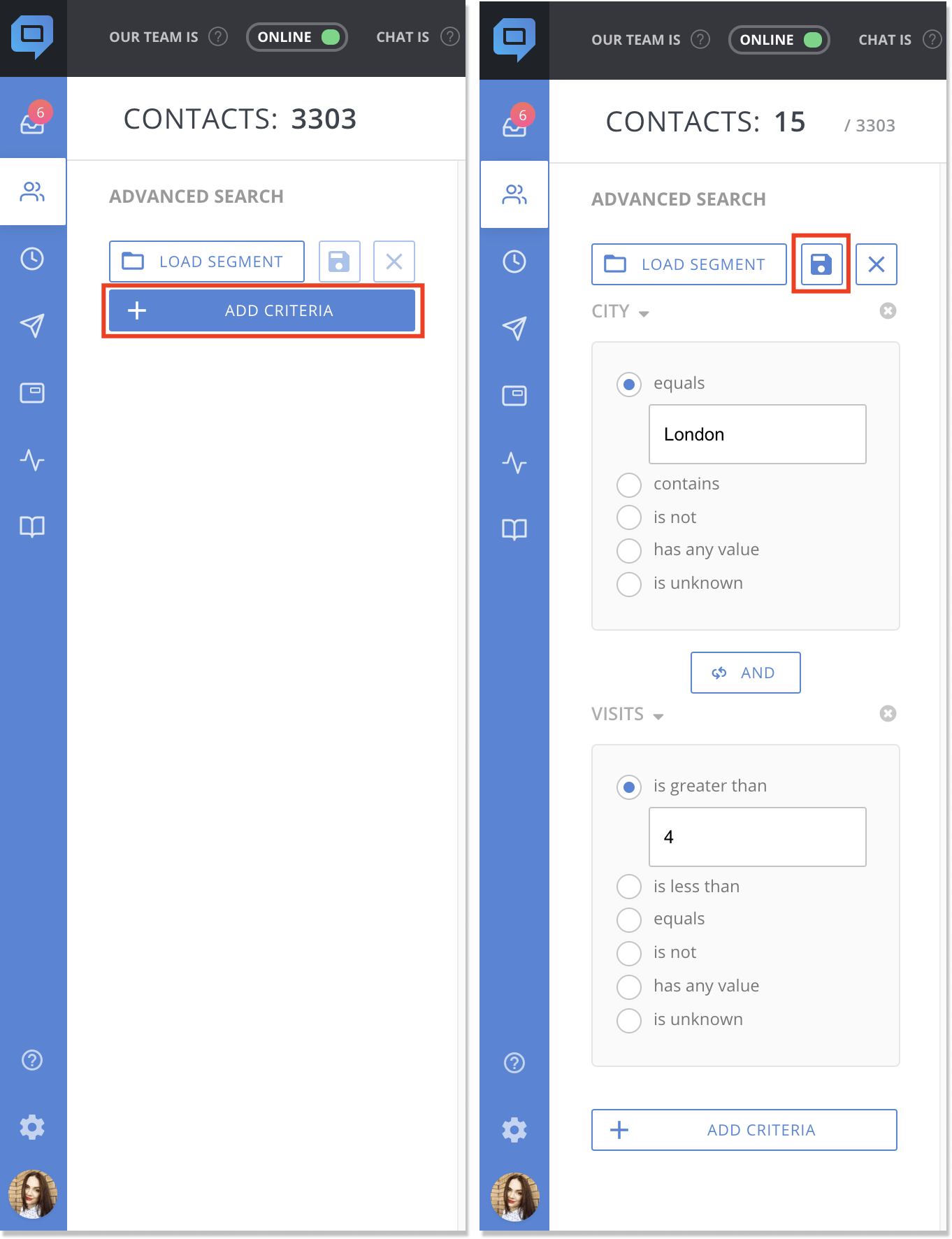
Customer segments can save you much time while creating auto or manual messages. Just load a proper segment, there’s no need to set everything up over and over again.
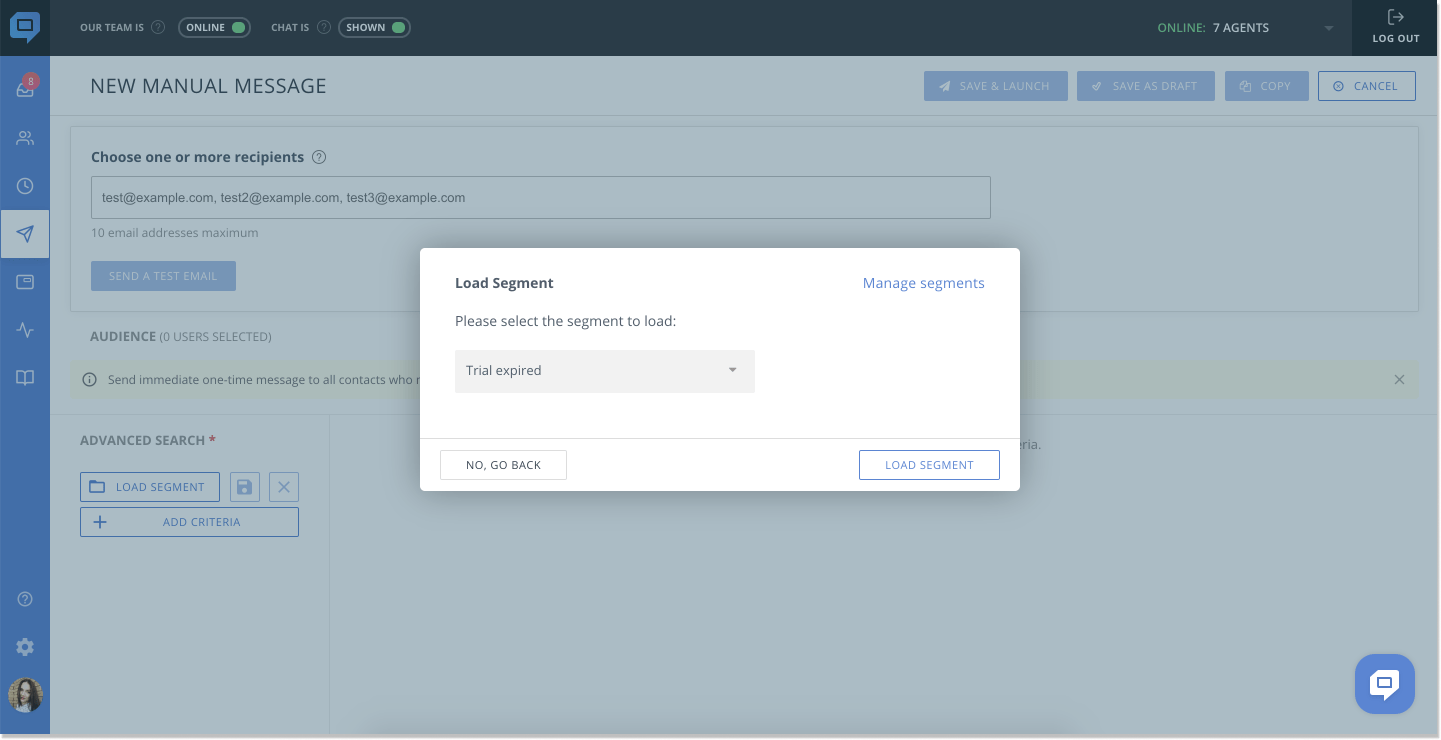
Bottom Line
Customer segmentation helps you boost conversions, reach the right audience, and interact with customers more effectively to meet their needs. But it actually has one more goal: to minimize your guesswork. A one-size-fits-all approach doesn’t work here, so you just need to harvest data to understand each of your customers. If you want to take your customer engagement to the next level, segmentation is just the thing.
We use this feature every time and it streamlines our workflow significantly. Sign up for HelpCrunch and start segmenting your customers to engage with them even better.

